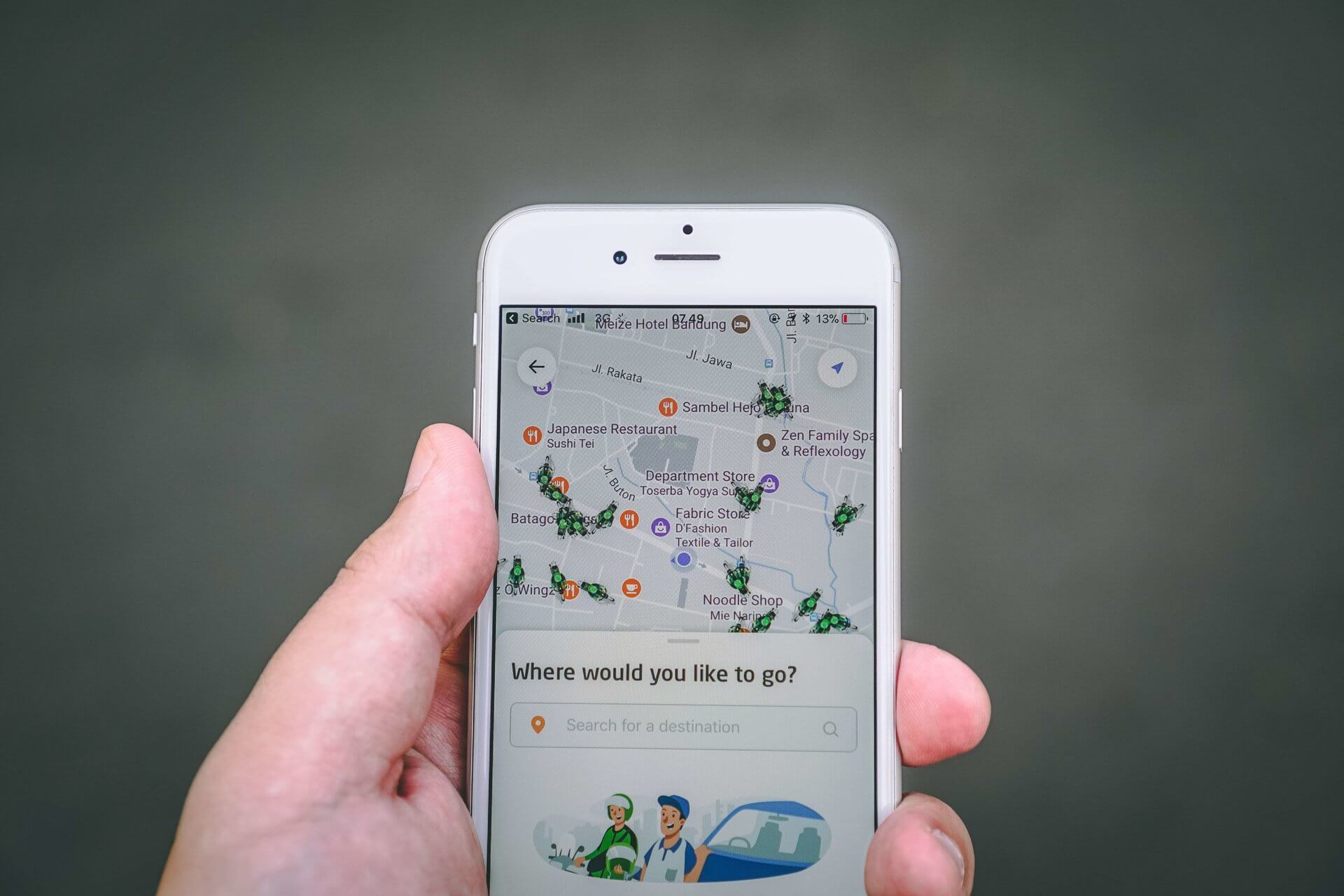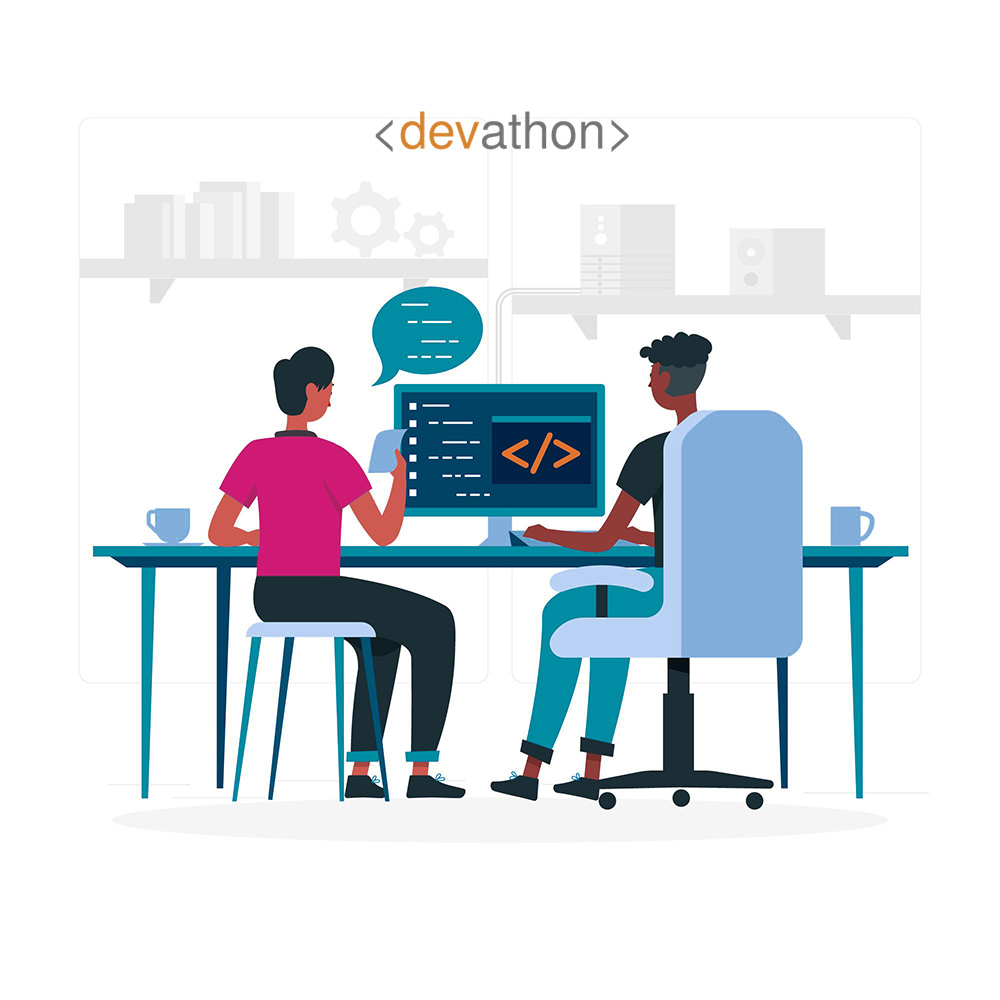Mobile App Development – 10 Writing Steps to Create a Good Project Brief
Developing a mobile application can often be more challenging than it seems at first glance. Whether you’re a developer, UI designer, project lead or CEO of a mobile-based startup, writing good project briefs prior to development is pivotal. According to Tech Jury, 87% of smartphone users spend time exclusively on mobile apps, with 18-24-year-olds spending 66% of total digital time on mobile apps. Of that, 89% of the time is spent on just 18 apps depending on individual users’ preferences, making proper app planning crucial for success.
Today’s audiences know what they want and don’t want in their mobile apps, encouraging teams to carefully write their project plans before they approach development. But how do you properly write a mobile app development brief without sacrificing your vision and staying within the initial budget? Why should you do so in the first place? Let’s discuss that and more in greater detail.
Why a Good Mobile App Project Brief Matters?
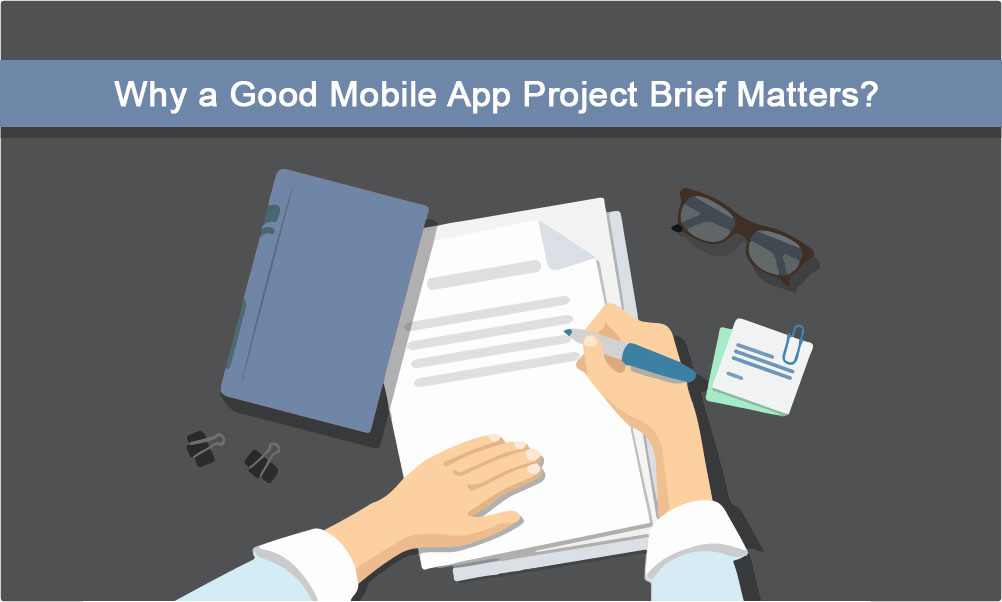
It’s worth discussing the significance of mobile app project briefs before we tackle the writing process itself. In practice, a project brief is used as a reference tool for developers to remain focused on the client’s deliverables. Approaching the development process without written and approved documentation can lead to drastic, last-minute changes, misunderstanding, as well as a loss of resources and brand reputation.
For example, developing a mobile app that filters restaurants based on food type, such as Happy Cow, means that developers should stay focused on it. Knowing that such and such features, UI elements, and API are necessary will help team members collaborate better in order to meet certain expectations. Whether you develop an app under your brand’s banner or outsource coding and design services to would-be clients, briefs can provide you with several benefits:
- Clarity on what your mobile app project “is” and “isn’t” early in development
- Point of reference for developers, project leads, and clients throughout the cycle
- Smart allocation of available time and resources based on objective development criteria
- Streamlined project data storage for further app updates and iterations
Writing Steps to Create a Good Mobile App Project Brief
1. Establish the “You” Behind the App
Depending on how “open” your project is to the public, you will want to write a detailed section about who the developers are. Elements such as company name, address, project lead, project title, as well as contact information, should be included in this introductory segment. Regardless of whether you build an in-house app or outsource developers to a client, this section is used for easy document storage and access.
2. Outline Concrete Goals & Objectives of your App

Once you’ve established who the project’s lead and his team members are, it’s time to define the app itself. The goals and objectives section will serve as a reference point for developers, as well as leads and clients who want to stay informed. What do you hope to achieve with your mobile app? Which crucial societal or industrial problems does it aim to mitigate? What are the benefits of using such an app for would-be users? This section should include KPIs defined via a standardized goal-setting methodology, to ensure clarity and objectivity.
3. Assemble your Development Stack
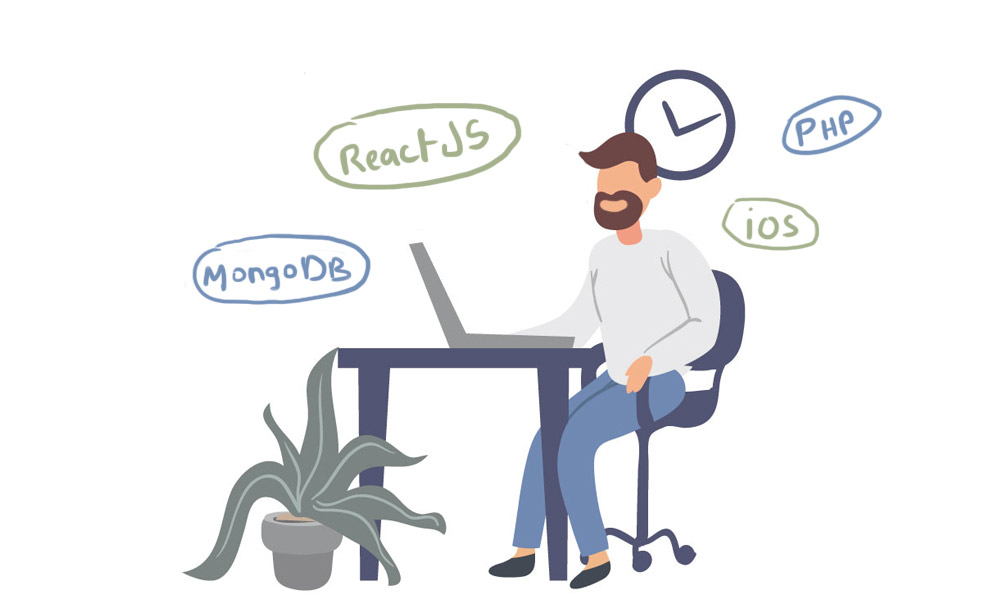
Once you have a good idea of where your app is headed in regards to functionality, you can assemble the tool stack it will require. Which platforms will your mobile app focus on – Android, iOS, or both? In case of the former, which Android frameworks will you utilize to develop the app? Which content creation and UI design tools will you use? Consult your coders, designers, and UX experts in order to assemble a stable stack that everyone on the team will utilize. This will allow for seamless, agile development to take place and result in better team cohesion.
4. Define the Target Audience
Your mobile app success hinges on defining its target audience as best as possible. No app can ever hope to fulfill the wants and needs of every person with a smartphone. As such, some target audience points you should consider using in your mobile app brief include:
- Age group and gender
- Lifestyle choices
- Professional background
- Pain points & needs
- Technological literacy
While not all-encompassing, these points will allow your developers to better cater to individuals in the target audience. Even the smallest UI color grading choices and navigational element placement can differ depending on the audience profile – take time to define yours properly.
5. Write User Stories
Context is everything when it comes to developing a mobile app that users will gladly return to and advocate for. Likewise, real-life examples of how an app will be used by users around the world can have a drastic positive impact on the development cycle. Thus, user stories should be an integral part of your mobile app project writing since they will contextualize the app’s use for developers. For example, “Samantha wants to find out if product X is organic, so she refers to our app” is a simple yet effective user story. Whatever API, programming language, and platform you end up using, written user stories can steer the process in the right direction.
6. Sketch a UI Design Prototype
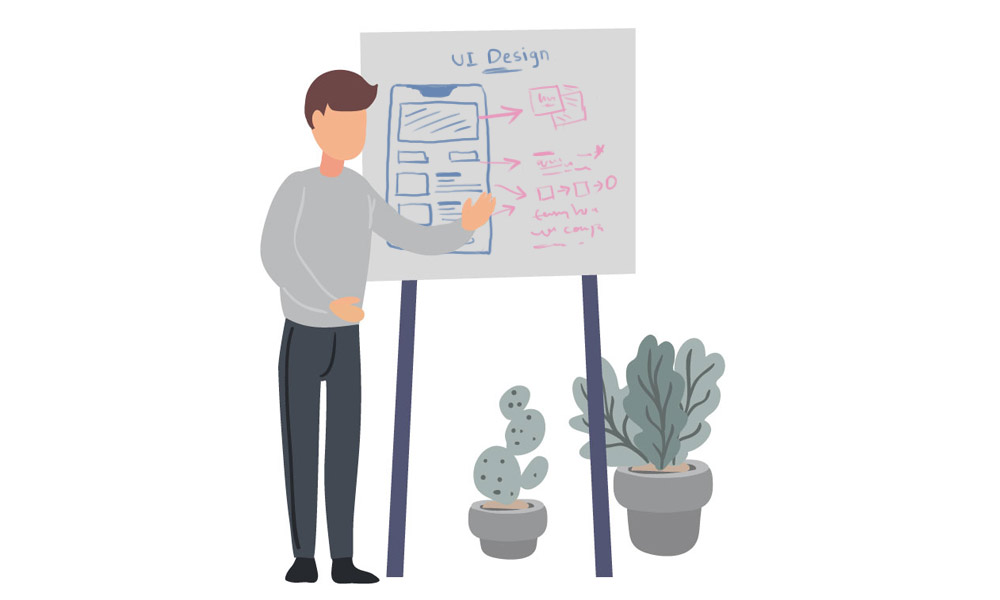
While a UI prototype included in the project brief is in no way definitive, its inclusion can make the development process more smooth and focused. When it comes to UI sketching, the more stakeholders are present during the process the better. This is especially true if you work with an outside client with their unique branding and vision for the mobile app. Include the design prototype in your written mobile app brief as a small yet significant reference point to come back to.
7. Address Competitive Apps & Brands
What makes your mobile app different from others on the market? Even though it may feel unsportsmanlike, addressing existing apps and brands on the market is pivotal for the long-term appeal and success of your app. What do competing brands already offer to users, and how does your app differ from what already works? How can you build on popular trends and avoid unpopular design choices in the industry? Write up a small section on competing brands and apps which you can use to direct your developers based on existing market examples.
8. Establish a Development Timeline

Once you’ve established goals and milestones, you should also create an objective timeline for mobile app development. The timeline should be separated into different sections, from initial planning and prototyping to development, testing, and QA. Don’t omit to create a timeline, since, without it, your developers will surely breach deadlines and be left directionless. This is especially true if you outsource development services since third-party clients always have an estimate on when they want the app to be finished.
9. Project Budget & Long-Term Monetization

Mobile app project documents should address budgetary resources and post-launch monetization opportunities, at least briefly. The budget can be paired with the aforementioned development timeline to determine how much of your total resources can be spent in any given phase. If you require API licensing or outside design resources, your app’s budget will greatly factor into development costs. Likewise, CEOs and investment partners will likely have an interest in your long-term development and monetization plans, giving them the incentive to support your endeavors.
10. Potential Errors & Crisis Scenarios
While this section may not come into play whatsoever, it’s important to factor potential bottlenecks into your development project. What happens if you run out of resources before the mobile app is finished? What happens if your investors pull out their support prematurely or if the chosen API becomes unviable? Write a list of potential problems that can arise during development and brainstorm with your team on how to solve them, just in case. This small yet substantial section of the brief can cap off the document and serve as a detailed reference for developers during the production cycle.
Mobile App Project Brief Writing Mistakes to Avoid

To cap things off, let’s tackle several potential pitfalls which can occur during the writing phase of your project brief. These mistakes can hinder the progress of your production cycle and cause severe budgetary and timeline issues due to confusion and misunderstanding. Patching them prior to active development is highly recommended.
-
Lack of Team Consulting
One person should never be in charge of writing a mobile app project brief in a vacuum. As we’ve previously mentioned, coders, designers, coordinators, and UX experts should all pitch in when it comes to writing the brief. This will lead to the early elimination of difficult/irrational development requests and much smoother production.
-
Feature Creep
There is such a thing as too many features when it comes to a mobile app. These apps are meant for specialized applications on screen sizes that don’t rival desktop or laptop devices. As such, UX should be taken into consideration when it comes to the list of features implemented in the final product.
-
Lack of Project Lead/Client Feedback
Even though developers are more in tune with current mobile app trends than their clients, the latter should still be included in the writing process. Going behind the clients’/project leads’ back when it comes to features or UI design will likely result in poor overall reception. Avoid unnecessary rollbacks and misunderstanding by asking for feedback from parties with interest.
-
Poor Brief Formatting
Finally, proofreading, editing, and formatting play an essential role in writing a mobile app briefly. Take time to consult tools such as Hemingway Editor or Readable once you’ve outlined your project brief, but before it is presented. This will ensure that your brand’s aura of professionalism and consistency remains high, as spelling or formatting mistakes can leave bad impressions quite quickly.
Key Takeaways
Which key takeaways we can distill from the discussion? Whether you choose Android or iOS may seem daunting to objectivize your mobile app’s idea into a written format prior to its development. However, such a document will ensure that your idea remains intact throughout the production cycle, leading to much smoother and resource-efficient development.
Adopting a structured, step-by-step approach to writing the brief will also allow you to quickly determine what works and doesn’t work with the initial pitch. Once you’re satisfied with the finished brief, you can devote some time to iron out writing mistakes, ask for feedback, and plan the production phase. Don’t develop mobile apps ad hoc – treat your ideas with care and respect, and its global audience will be that much more thankful for it.
Are you looking to get your App built? Contact us at hello@devathon.com or visit our website Devathon to find out how we can breathe life into your vision with beautiful designs, quality development, and continuous testing.
Author Bio:
Bridgette Hernandez is a career copywriter, content creator, and editor at Trust My Paper and Best Essays Education writing services. Her professional portfolio consists of contributions to digital marketing, IT, business development, as well as Supreme Dissertations, where she contributes her skills as a writer. In her spare time, Bridgette enjoys quiet evening walks and listening to her favorite podcasts.





